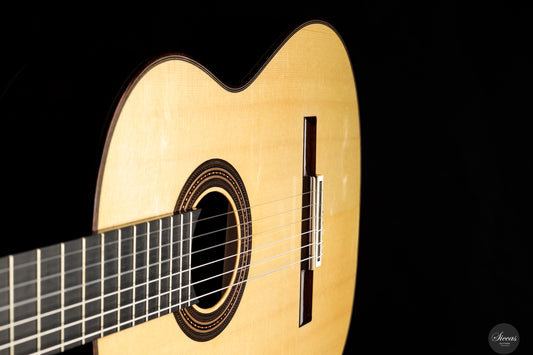
Mastering Left-Hand Technique on Classical Guitar: A Tutorial with Matthew McAllister
At Siccas Guitars, we are committed to helping guitarists improve their skills with expert tutorials from world-renowned musicians. In our latest video, acclaimed classical guitarist Matthew McAllister provides in-depth advice on how to enhance your left-hand technique, a critical aspect of playing the classical guitar. Whether you're a beginner or an advanced player, mastering the left hand is key to achieving fluidity, speed, and precision in your playing.
Why Left-Hand Technique Matters
The left hand plays an essential role in shaping the sound of the guitar. It's responsible for fretwork, finger placement, and pressing the strings, which directly impact intonation, tone quality, and musical expression. Poor left-hand technique can lead to unnecessary tension, poor tone, and even injury over time. Matthew McAllister, with his years of experience, shares key tips to help you develop a strong, relaxed, and efficient left-hand technique.
Key Techniques for Left-Hand Mastery
In the video, Matthew McAllister breaks down several important techniques that can improve your left-hand proficiency:
- Finger Positioning: Correct finger positioning is crucial for minimizing unnecessary movement and avoiding string buzz. McAllister emphasizes the importance of positioning the fingers close to the frets and applying the right amount of pressure to ensure clean, sustained notes.
- Hand Alignment: One of the major points discussed is maintaining proper hand alignment. By keeping your left hand relaxed and aligned with the fretboard, you can achieve better reach and avoid strain. McAllister provides exercises to help you maintain this alignment, even when playing complex passages.
- Finger Independence: Developing independent finger movement is essential for playing fast runs and intricate melodies. In this tutorial, McAllister demonstrates specific exercises designed to strengthen each finger and improve agility across the fretboard.
- Shifting and Smooth Transitions: Efficient shifting between positions is another important skill that every guitarist needs to master. McAllister offers guidance on how to execute smooth and quick shifts without losing control or clarity.
- Barre Chords and Stretching: The tutorial also covers techniques for mastering barre chords, which require significant left-hand strength and stamina. McAllister shares tips for achieving clean barre chords while minimizing fatigue, along with exercises to improve finger strength and flexibility.
Additional Tips for Injury Prevention
One of the main challenges guitarists face, especially when working on their left-hand technique, is overuse injuries such as tendonitis or muscle strain. McAllister stresses the importance of relaxation and taking breaks during practice. He suggests warm-up exercises that prepare the hand for longer practice sessions, helping to prevent tension and reduce the risk of injury.
Exercises to Improve Left-Hand Dexterity
In addition to the technical advice, the video includes several practical exercises to improve dexterity, strength, and coordination. These exercises focus on:
- Spider exercises: An excellent drill to enhance finger independence and coordination between the fingers.
- Stretching exercises: To increase the flexibility of the fingers and hand, allowing for better control when playing challenging pieces.
- Scale practice: Practicing scales not only improves finger strength but also helps develop muscle memory, which is essential for fluid playing.
About Matthew McAllister
Matthew McAllister is a leading classical guitarist known for his refined technique and expressive performances. He has performed internationally and is recognized for his ability to break down complex guitar techniques into simple, accessible steps for players of all levels. McAllister's teaching style emphasizes efficiency, relaxation, and musicality, making him one of the most sought-after guitar tutors.
The Importance of Left-Hand Technique in Classical Guitar
The left hand plays a vital role in intonation, articulation, and expression. Without a solid foundation in left-hand technique, even the most skilled right-hand fingerpicking techniques won't achieve the desired sound. Classical guitar pieces, particularly those by composers such as Bach, Villa-Lobos, and Sor, demand precision from both hands, making left-hand technique a priority for all guitarists.


















